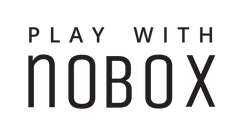Some aspects of engineering just can’t be completed in the virtual world.
When you’re designing an object, you need to know what it looks like and if it’s going to work. Once you get it “right” on the computer, it’s time to get a feel for it IRL. That’s where prototyping comes in.
It used to be that you would have to send your files away to a manufacturer to get your prototype, but with 3D printing, that’s no longer the case. You can do your own prototyping to save time and money on iterations before you’re ready to have it manufactured. The easiest way to prototype is simply to take your computer model and 3D print it.
What is prototyping and how does it lead to better products?
A prototype is a test part that represents design intentions, but isn’t yet refined by testing. You might test your model for for performance (strength), manufacturing (reproducibility), or aesthetics (looks, fit, feel),
For instance, companies that design garden and kitchen tools have to make multiple models before they can be confident that their tools are both beautiful to look at and comfortable to hold. Prototyping lets them create a model of the object being designed, test it in an actual hand and iterate various functional aspects until the design is dialed in.
How We Prototyped, Exactly
In the case of the HomePod stands, we used 3D prototyping to size the hole in the side of the support pole to get it as small as possible while still allowing us to easily insert the cable head through it. The action of inserting the cable head was too difficult to model on the computer, so we made a few 3D model prototypes and tested the design that way.


Once 3D printing told us we had the size of the hole right, we sent our design to the fabricator to be cut via tube laser. The fabricator put the tube together with the base and pedestal and created an actual prototype of the HomePod stand for us to evaluate.
Let's Normalize 3D Printed Prototypes
Getting access to tube lasers isn’t easy and prototyping with them usually involves around 6-8 weeks wait time between prototype iterations. The 3D printer reduces this to minutes, and substantially cuts costs. Plus, 3D printed prototypes reduce waste. You save on materials, manufacturing costs, and transportation. And when you’re done with your prototype, you can recycle it! Most 3D printer filament is fully recyclable. Most importantly, 3D printing allows NoBox to make the product for a much more reasonable price because we didn’t have to pay for rounds of expensive prototyping that are built into the cost of most designed objects.
Learned something? Please share!
If you think some might be interested in how to prototype via 3D printers, please share this article with them.



1 comment
Liked your website, looking to see you grow. Go for it, Uma!